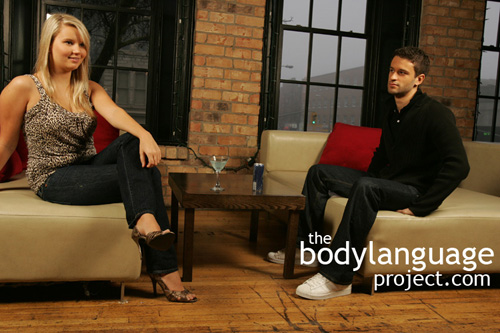
Does he always sit on his hands or is he hiding something?
Baselining is probably one of the most important and often overlooked aspects of reading body language. It refers to the “normal” motions that populate the repertoire of each and every person on the planet. Normal here is the operative word. We can’t even begin to read someone until we first have their baseline pegged. For example, to read someone that is normally flighty and constantly moving, as agitated is wrong since they are merely acting out their particular “idiosyncratic nonverbal behaviour.” That is, the body language that is particular to specific people and that makes up their repertoire, or basket of cues considered normal for them. This person might be flighty or high strung by nature but they certainly can’t be constantly agitated by nature as our nervous systems can’t tolerate perpetual stress. A person high strung by nature who seemingly freezes instantly is telling us based on their baseline that something is up. Baselining tells us that a condition in their environment has changed and it has affected them. It now becomes our job to detect the cause for the change.
Baselining involves learning about how a person usually sits, how they use their hands to gesture, where they place their hands while at rest and relaxed or when nervous, how they place their feet when standing, their overall posture, how they prefer to cross their legs such as whether they cross them equally left over right as right over left, and so on. The list to baselining is utterly endless as are the myriad of cues that can be emitted from the human body, fraught with or, absent of, meaning.
By establishing a baseline it will be possible to catch sudden changes in body language. This is the ultimate purpose to establishing a person’s baseline. Without catching the changes, body language loses its ability to indicate exactly what is going on. For example, a younger brother that is acting exuberant and ecstatic who is jumping around with joy and happiness, who, at a moments notice, finds himself in the presence of an older brother only to suddenly cease his joyful movements, turtles his head into his shoulders, and becomes quiet, says a lot about what kind of relationship they have been having lately. Body language is directly linked to emotions, and so when it changes, we know that something has cause the change, and more often than not, it will be precisely the event that preceded it.
These changes aren’t just limited to events either, they can also be tied to words spoken, or even topics. A married couple might be carrying on amicably, but when there is mention of an ex-girlfriend, even casually, the wife might begin to display dominant and closed body language such as crossing arms, wagging fingers, or scolding eyes. She is indicating that this women or topic is a particular sore spot between them and the sudden change in mood, from good to bad, tells us that it is the topic that is the issue. Criminal investigators will frequently steer suspects off-topic (and seemingly off the record) by talking about favourite pass-times or hobbies by example. This serves the investigator by producing relaxed body language. Once a baseline is established interrogators begin to introduce facts surrounding the investigation to measure their effects. They might begin with items not even connected to the trial and then suddenly introduce a murder weapon, for example, to see if nervous body language appears. During criminal investigations the murder weapon can be kept a secret from the public especially early on, so only the real criminal would exhibit a visceral response to viewing it. While these sorts of interrogations won’t directly lead to a conviction, it does provide clues for further exploration. Like all body language, clues tell us if we are on the right track or if we’ve eliminated leads, at least for the time being.
Those who don’t know about baselining will find it difficult to read other people who lack similar affect to themselves since their only reference of normal is what they do or what the average person they associate with do (which more often then not is very similar to themselves anyway since we tend to hang out with those of like mind). People that don’t baseline won’t see people for their individual characteristics, idiosyncrasies, culture and habits. As we work through life we should have our family, friends, coworkers, bosses, instructors, or anyone else we interact with regularly pegged for their baseline. This will not only make reading them easier, it will also give us “archetypes” that can be cross referenced as comparisons. This in turn, gives us a better chance at evaluating others, even strangers, on the spot, and in real time.







